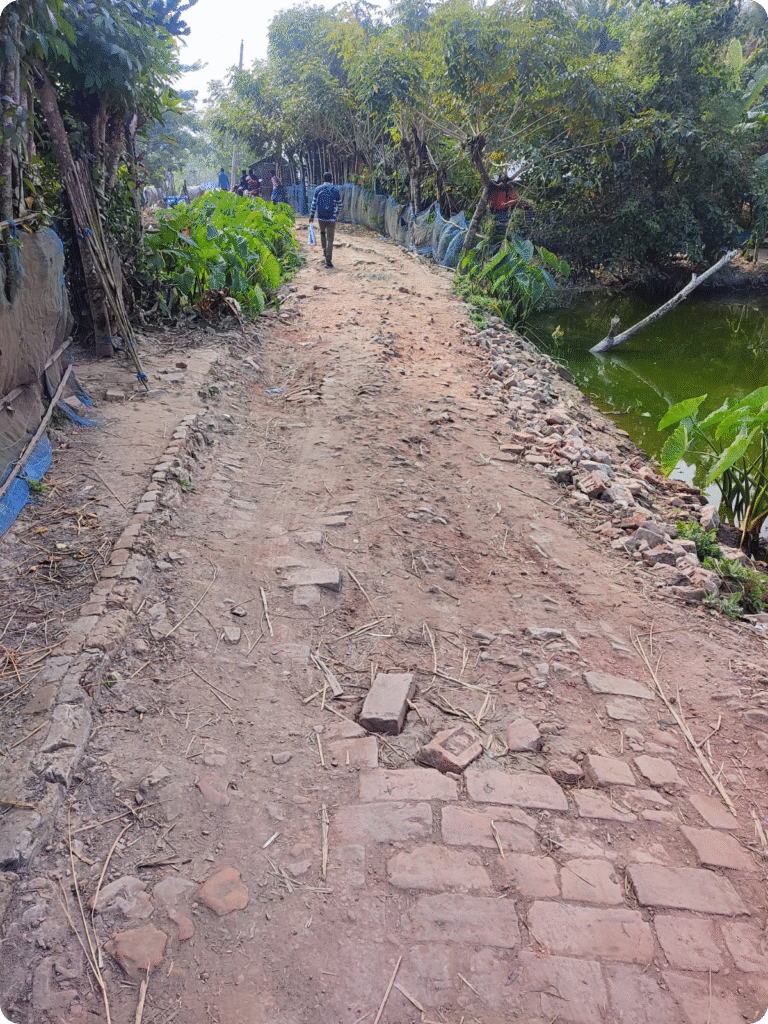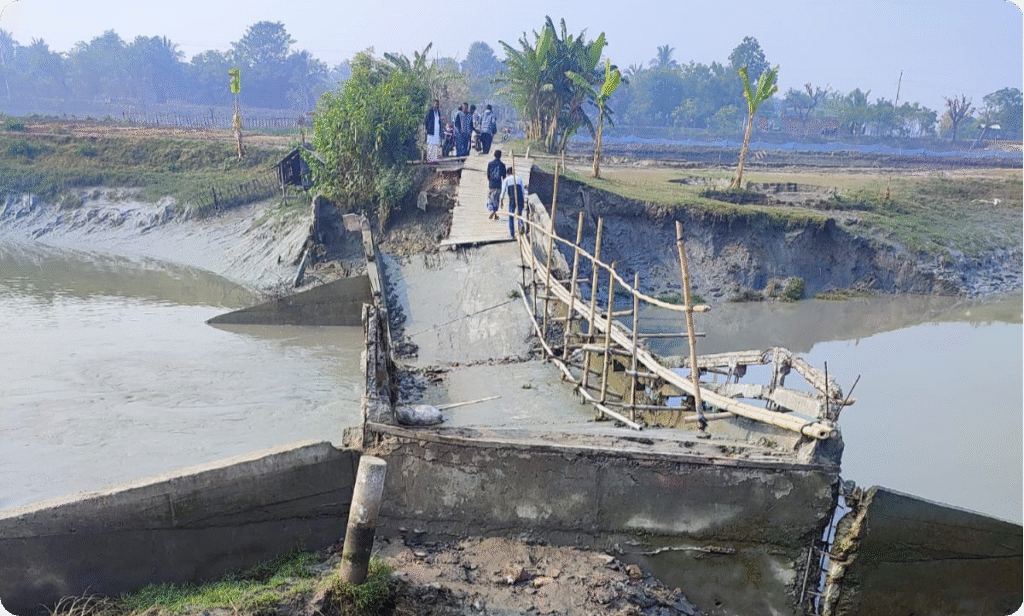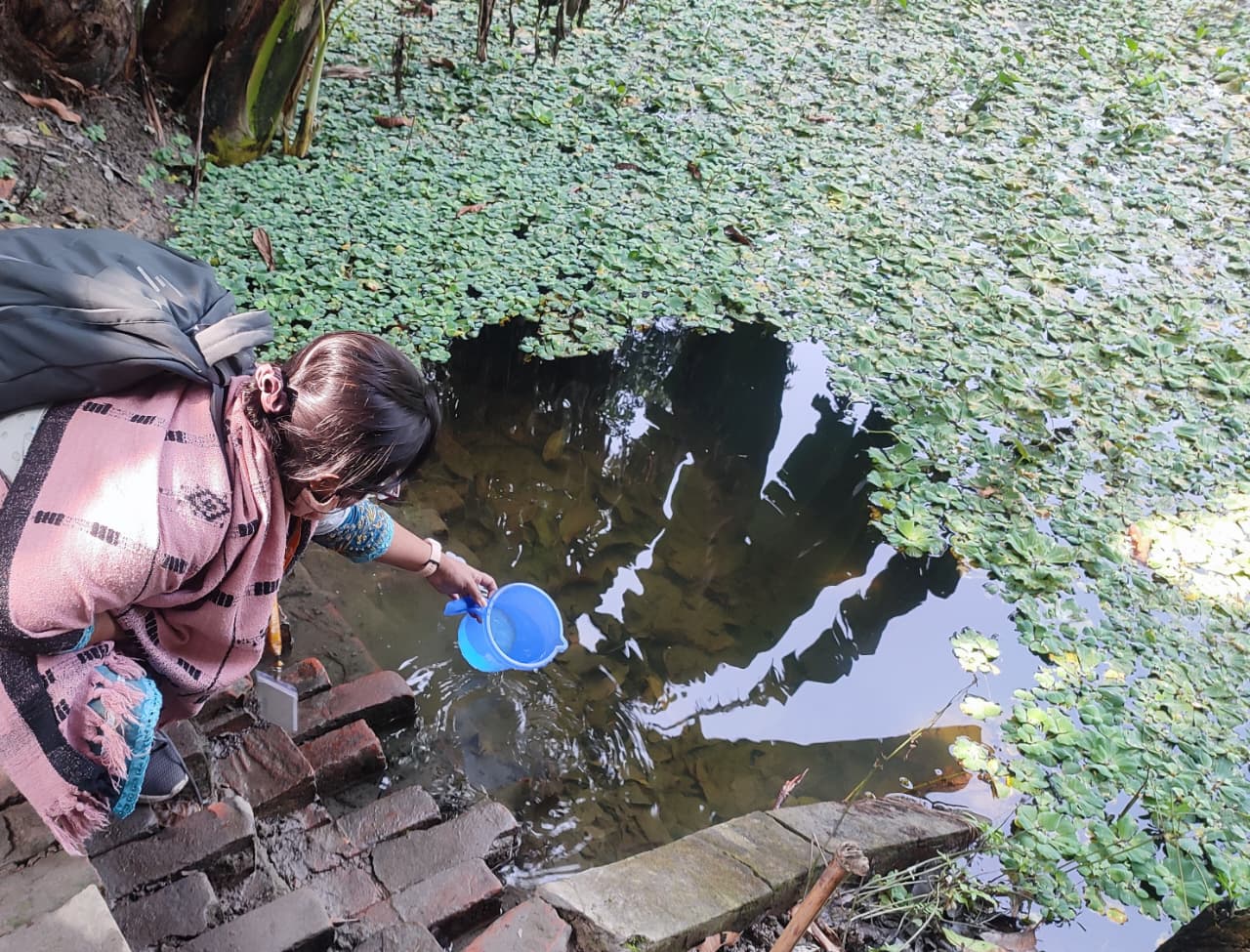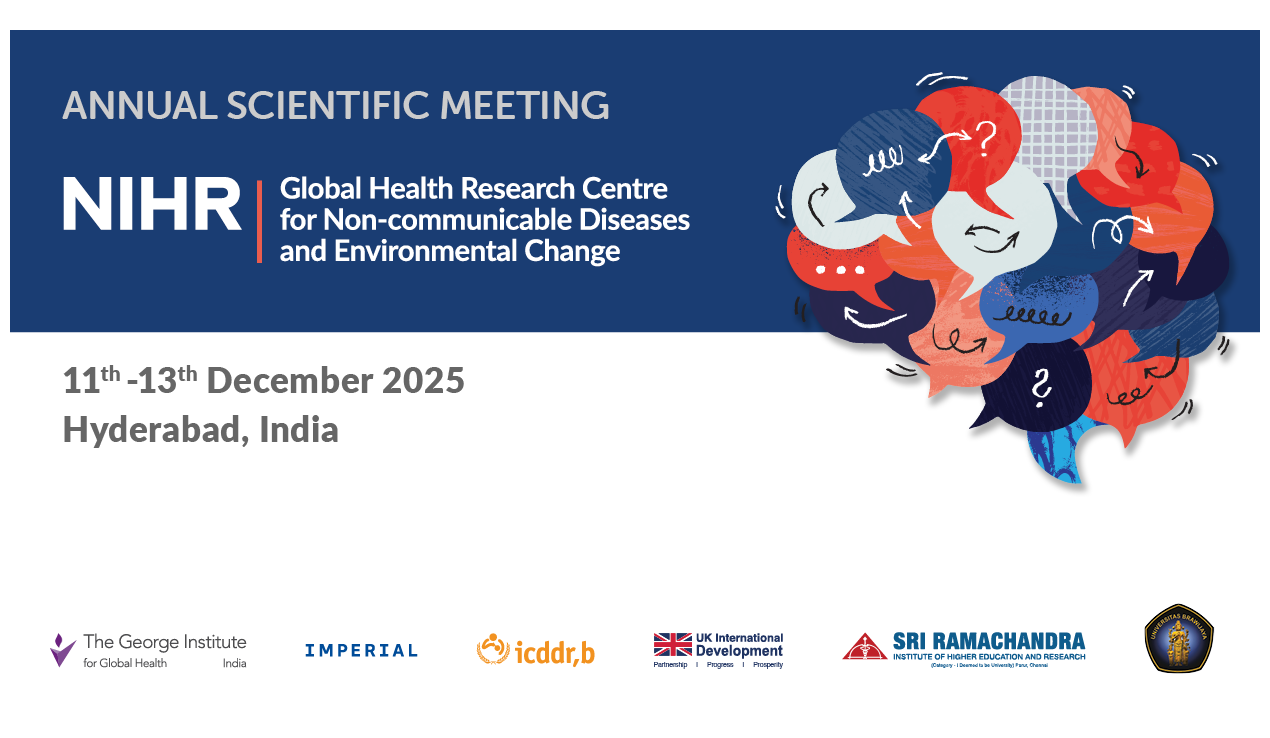A field visit of a research project offers a first-hand experience of learning many realities in the community where the project is being implemented, which also offers an opportunity to make meaningful contributions to the research. During a recent field visit to Koyra, a coastal sub-district in Bangladesh, as a part of the research project under the NIHR GHR Centre for NCDs and Environmental Change, Bangladesh, I had the opportunity to have a firsthand experience of working in a hard-to-reach area. I share my reflection on the challenges faced during my first field visit from the perspective of an early-career woman researcher.
The Travel Marathon
I began my journey to Koyra from the city centre at dawn, watching the city slowly wake up as we set off. It took almost five hours to reach our destination with the rest of the team members. We had to change our vehicle at least three times, including a local bus, vans, nasimon (local auto), and at times, whatever was available. Public buses were often overcrowded on working days, and for me and the other female team members, this was particularly uncomfortable. More than once, I found myself standing for long stretches, pressed between passengers, because there were no seats available.
Getting back at the end of the day was even harder. After finishing fieldwork, we would often discover that regular bus services had already stopped, and we would scramble to find any vehicle willing to take us back to the city centre.
Having no nearby accommodation meant we had to stay at a distant location outside the field area, which added another layer of difficulty to our work. Each day, we started before sunrise and ended well past sunset, with hours spent travelling back and forth. The long journeys on poorly maintained and crowded roads raised constant safety concerns. Many vans and auto-rickshaws were driven recklessly, some even with faulty brakes, making every trip feel risky. Travelling this way after a full day of fieldwork was physically exhausting and mentally tiring, and the fear of road accidents was a constant worry throughout our time in the coastal area.
Uneven Pathways & Its Impact on Daily Life
Once we arrived at the field site, we quickly realised that the condition of the roads within the villages presented significant challenges.

Many of the internal routes were narrow, uneven, and in several places, waterlogged or muddy, especially after rainfall. Navigating these paths required extra caution and often slowed our progress considerably.
Transportation between households and community facilities became not only physically demanding but also time-consuming, impacting our ability to fulfil our preset targets of the field work that day. Beyond the immediate logistical difficulties, these conditions offered a deeper understanding of the barriers residents face in their daily lives, for crossing any distance, whether going to a market, sending children to school or accessing healthcare or other essential services.
Image curated during field visit
Lack of Basic Facilities
Basic amenities like toilets, which many take for granted, were noticeably scarce at the field site, and as a woman, this posed a significant challenge. The lack of access to a proper washroom meant suppressing natural bodily needs for the entire day. It was not just uncomfortable; it was unhealthy and mentally draining. Although the villagers were kind enough to allow us to use their washrooms, the unclean pond water deterred us from using the facilities. The same pond water was also used for bathing and often caused skin irritation and itching, adding another layer of discomfort. This constant hardship is a sharp reminder of how inequities in infrastructure disproportionately affect women, both in professional settings and in daily life.
A Call for Empathy and Action
My first field experience in a coastal area of Bangladesh made me realise how infrastructure problems are not just statistics but lived realities. The poor internal roads, the lack of basic amenities and the scarcity of clean water created constant hurdles for women, both for us as researchers and for the residents. One of the most striking experiences for me was the limited liberty to use water for drinking, cleaning or bathing. Even tea and other drinks in the field carried the sharp taste of salt. We had to purchase bottled mineral water to avoid saline water, even for bathing or cleaning. Drinking non-saline water is a luxury for local people, and it triggered a deep realisation of how they suffer from not having the freedom to drink clean water, something people in other parts of the country can do without difficulty.
Women there manage household chores, caregiving and water collection under these conditions every day. These reflections convinced me that there is a dire need for local authorities to take concrete steps to improve roads, ensure basic amenities and create sustainable solutions for clean and low salinity drinking water.

Image curated during field visit
Addressing these urgent needs would reduce the physical and mental burden on women and improve the quality of life and health of entire communities. This first field visit left me not only with data but also with a deeper resolve to push for better roads, safer travel and access to clean water, which could ease the burdens of both the communities we study and the researchers who stand beside them.
——————————————————
This blog was authored by Sharif Irfat Zabeen with valuable contributions from Dr. Aliya Naheed and Noshin Farzana
About the author:
Sharif Irfat Zabeen – Sharif Irfat Zabeen is an early-career researcher. She is currently serving as a Senior Research Officer at the NIHR Global Health Research Centre for Non-Communicable Diseases and Environmental Change. She works with the NIHR Bangladesh team within the Non-Communicable Diseases Department at icddr,b. With a background in Health Economics and nearly five years of research experience, Zabeen’s work focuses on economic evaluation and monitoring and evaluation of health interventions. She is passionate about research communication and translating evidence into action.
This research was funded by the NIHR (Global Health Research Centre for Non-communicable Diseases and Environmental Change) using UK international development funding from the UK Government to support global health research. The views expressed in this publication are those of the author(s) and not necessarily those of the NIHR or the UK government.






